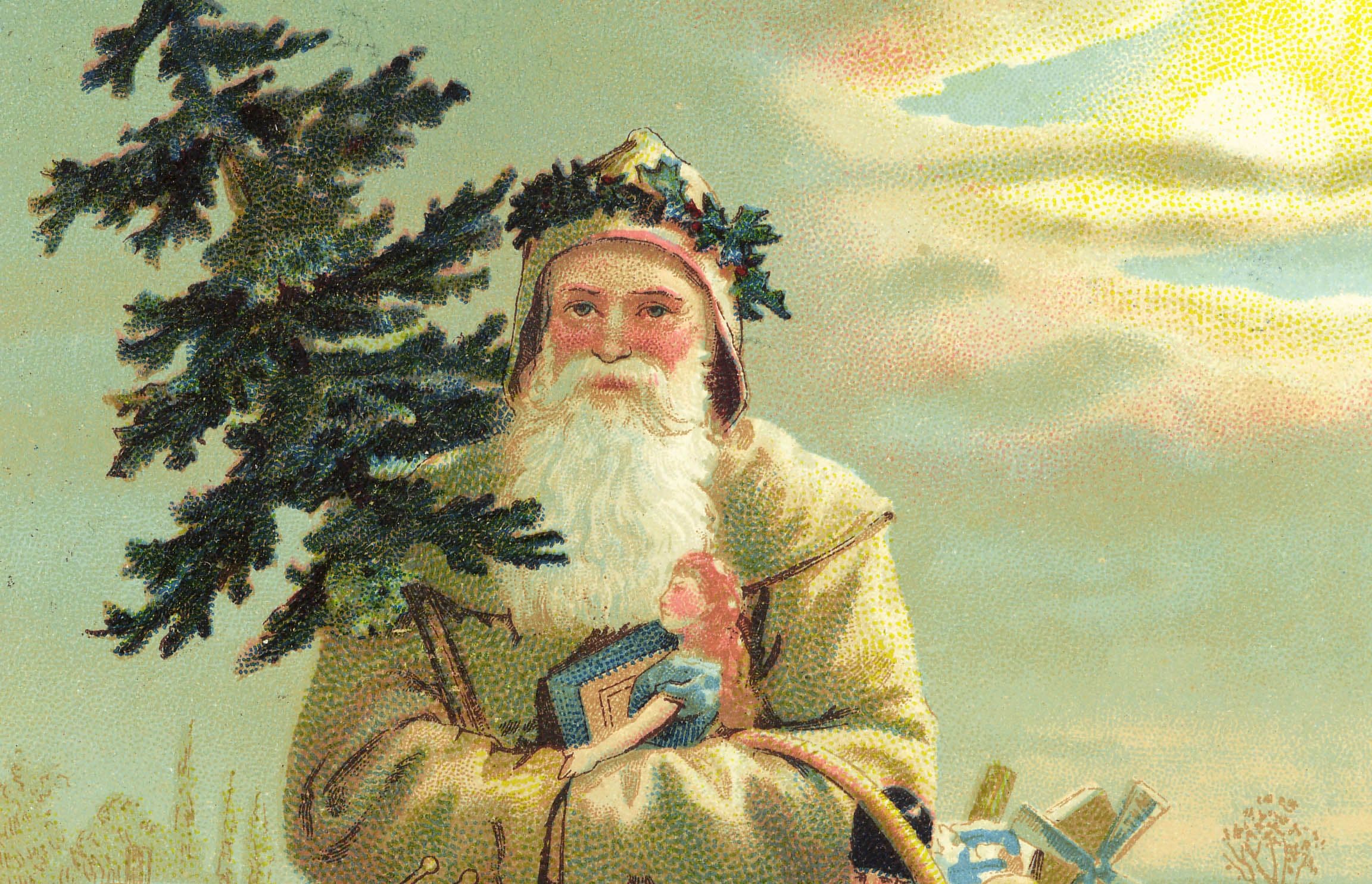
Austrian postcard from 1899 Photo: CC BY SA 2.0 / Taki Steve
Christmas is a beloved holiday in New Zealand, yet most of us don't much of a clue about the traditions that go with it. Why does Santa come down the chimney? Why cut down a perfectly good tree and put it in the lounge? Why is it even in December?
Mark Forsyth has been knee-deep in mistletoe researching its origins his new book, A Christmas Cornucopia: The Hidden Stories Behind Our Yuletide Traditions.
Forsyth is a fan of Christmas, himself.
“It’s great that we have this little emotional release every year, and we are nicer to each other at this time of the year, we’re better people.”
On a different note, the ‘mas’ in Christmas actually means ‘go away’ in Latin, he says.
In early Christianity only those who’d been confirmed or baptised were allowed to stay for the full duration of the service. Those who had not been were expected to leave before communion wafers were taken.
“So Christmas, amusingly, literally, means ‘Go away, Christ’.”
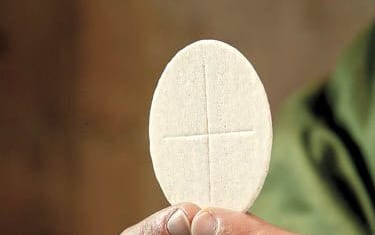
Communion wafer Photo: CC BY SA 2.0 / York Minster
The word ‘Yuletide’ goes back to the Vikings, he says.
“The ‘Yule’ was a whole month in winter when you couldn’t do anything but drink, basically… which sounds fun to me.”
The date that we celebrate Christmas does not come from the Bible, says Forsyth, which gives no details of its calendar timing.
The only clue to be found is the mention of the shepherds watching their flocks “by night”, which was only possible in spring, summer and autumn. (Not in winter, which actually rules out December, Forsyth points out).
The 25th of December was arrived on by tracing back nine months from Jesus’s birth (which was during the Spring Equinox).
Despite being officially a religious holiday, very religious people have always been suspicious of Christmas, says Forsyth.
As early as 386AD, a priest named St Gregory of Nazianzus complained that its true spirit had been forgotten.
Even by then “it was all about the feasting and the dancing and the having fun”, says Forsyth.
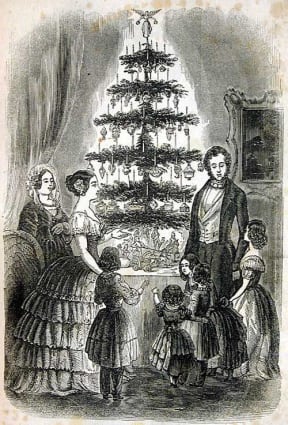
An 1850 American version of the famous image of Queen Victoria's family Christmas tree. Photo: Public Domain
The Christmas tree originated with stage plays about Adam and Eve.
The one prop essential to any production was a tree (evergreen for longevity) decorated with fruit, Forsyth says.
Then in 1848, an illustration of Queen Victoria, Prince Albert and their family around a Christmas tree that was published in the Illustrated London News confirmed it as a Christmas must-have in England, then in turn the United States.
Christmas cards had appeared earlier that decade– an invention of the English civil servant Sir Henry Cole, who co-founded the postal system.
Early Victorian examples are quite bizarre, says Forsyth.
“Stuff like frogs killing each other… or children being eaten by Christmas puddings. It’s absolutely messed up.”
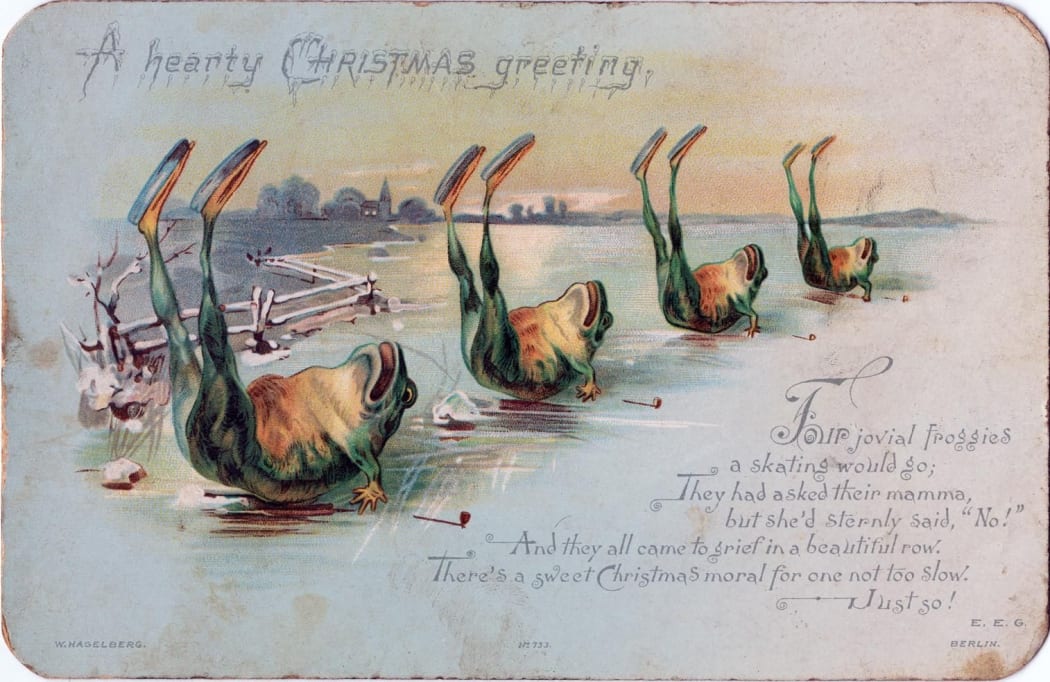
“A hearty Christmas greeting: Four jovial froggies / a skating would go; / They asked their mamma, / but she’d sternly said, ‘No!’ / And they all came to grief in a beautiful row. / There’s a sweet Christmas moral for one not too slow. / Just so!” Photo: Nova Scotia Archives / Flickr
Finally, just to clear it up once and for all, did Coca-Cola invent Santa?
“Absolute nonsense. Absolute complete and utter balderdash. Just not true.”
Santa was first used in advertising by White Rock Ginger Ale in a December 1923 edition of Life Magazine.
Coca-Cola ads didn’t feature Santa until 1935.
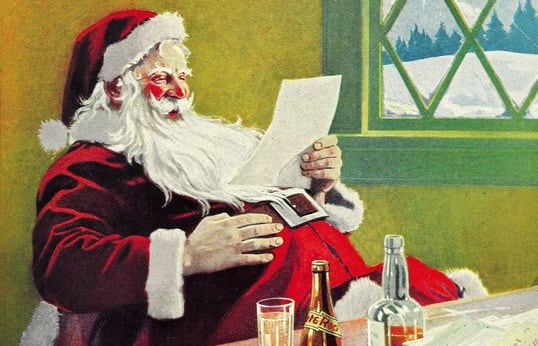
1923 advertisement for White Rock Ginger Ale Photo: Courtesy of White Rock Products Corp

